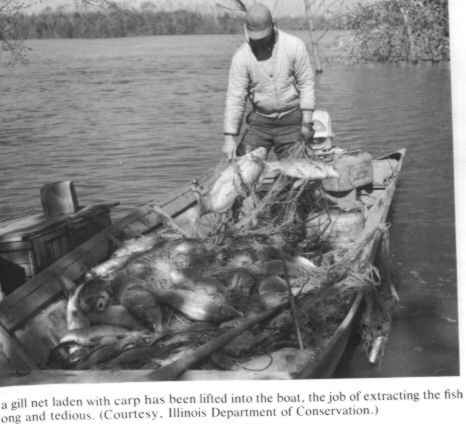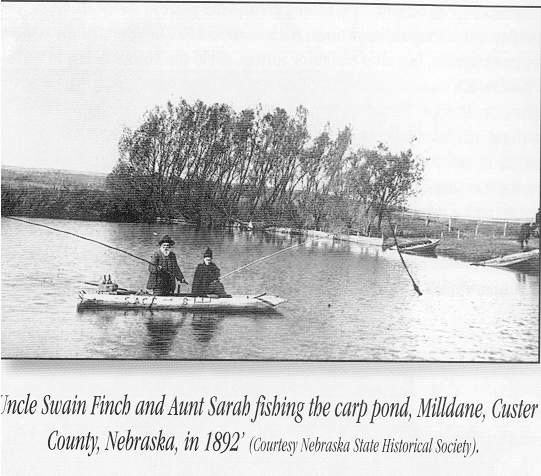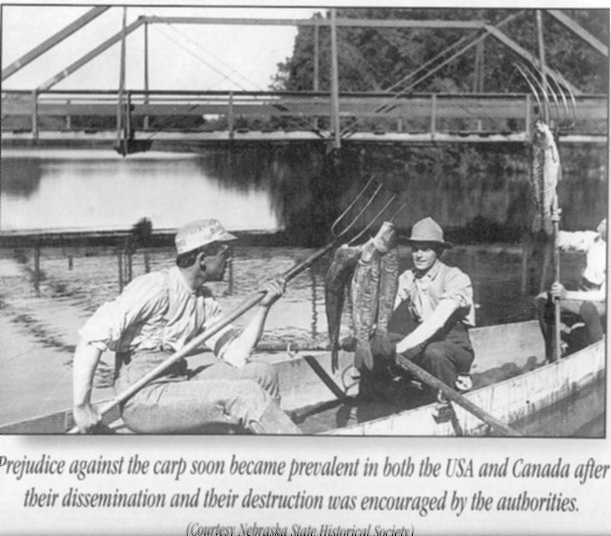

Who hasn't heard some of the following ideas from anglers?" Carp are
bad fish; they can survive in sewers.""Carp are oily and taste terrible
because they are bottom feeders.""Carp are lazy, no challenge to sportsman."If
you believe these myths, the following pages will try to convince you otherwise.
The carp is one of North America's most widely distributed and underutilized
fishery resources.
The carp (family Cyprinidae) is exotic to North America. It was introduced
here. The evolution and distribution of carp is related to the movement
of continents millions of years before the present. At the close of the
Paleozoic Era 240 million years ago, the continents had drifted together
to form the super continent Pangea, and the major groups of fishes were
already well established. About 200 million years ago, Pangea began to
split into northern and southern tiers. The northern tier, called Laurasia,
contained the future North America, Europe, and northern Asia. To the south,
Gondwanaland contained South America and Africa. About 140 million years
ago the tiers split into eastern western blocs along a line that would
open to become the Atlantic Ocean. By 80 million years ago, both Americas
were drifting "freely" to the west. They reestablished tenuous connection
to each other only in modern geological times. These continental movements
led to the separation of the many minnows of North America and Eurasia.
Evidence suggests that the common carp originated in the area of eastern
Europe and western Asia after North America separated from Eurasia.
Prior to 1900 most native fish were viewed as vital food resources. Fish designated as sport fish today were harvested commercially and shipped by rail to the cities. The results were gravely declining stocks of river and lake fish at a time the U.S. population was greatly expanding. In 1871 Ulysses S. Grant and Congress ordered the formation of the U.S. Fish Commission to oversee the nation's fisheries interests. By 1877 the studies of European fish farming techniques indicated the carp would contribute to the strength of the nation. That year, by executive order, carp were raised in the Babcok Lakes on the monument lot in Washington, D.C. From that origin, millions of pounds were distributed nationally. At this time refrigeration was yet unknown, and the transportation of fish from the states bordering the coast was dependent on icehouse preservation. Carp provided, to the nation's markets, millions of tons of good table quality fish. Many prominent hotels listed carp on their menus including the Waldorf and Astoria. The quality of fast growth and adaptability to new environment were factors in considering the carp as a national resource. Carp became plentiful. Street vendors sold carp "cheaply' and abundantly. So much so that it became the "poor man's fish." Difficult to catch on hook and tackle, carp were harvested by netting. Hungry American families loved carp, however as it more and more became known as the "cheaper" fish and the economy improved, carp became the fish of certain ethnic cultures. Refrigeration helped more widely distribute the costlier species and ocean fish. The myth of "mud fish" and bottom feeder was applied to carp. The oceans were perceived as pure, the rivers were becoming polluted. Never the less, the resource remains.
 |
 |
 |
 |
 |
use back browser to return